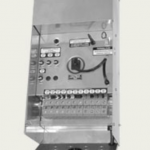Last week I had the opportunity to attend an all day landscape lighting seminar sponsored by Cast, a supplier of beautiful cast bronze landscape lighting fixtures. I had taken courses before on lighting design, and knew the basic concepts of how and what to light in the landscape, but this seminar really helped me understand some of the technical components of landscape lighting. In the first of two posts on the topic, I’ll cover some basics about line voltage vs. low voltage.
The electricity available to your house is 120 volts (also called “line voltage” or even “house voltage”). That is what your indoor outlets supply and what your indoor appliances use. Working with this voltage is dangerous and requires a licensed electrician.
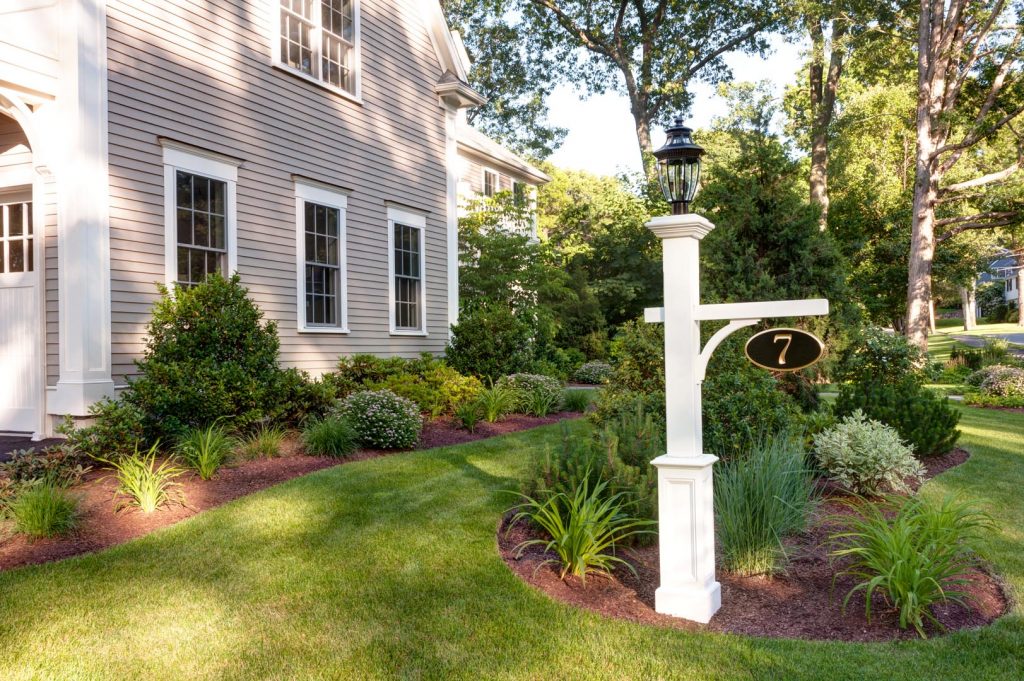
Line voltage lamp post
Line voltage in the landscape is most typically used for lamp posts, house mounted fixtures, and outdoor kitchens (where you’ll want a GFCI outlet to plug in your blender!). If you want a line voltage fixture in your landscape, plan ahead, you’ll need an electrician, a trench at least 18″ deep for the conduit, and in most towns an electrical permit and inspection.
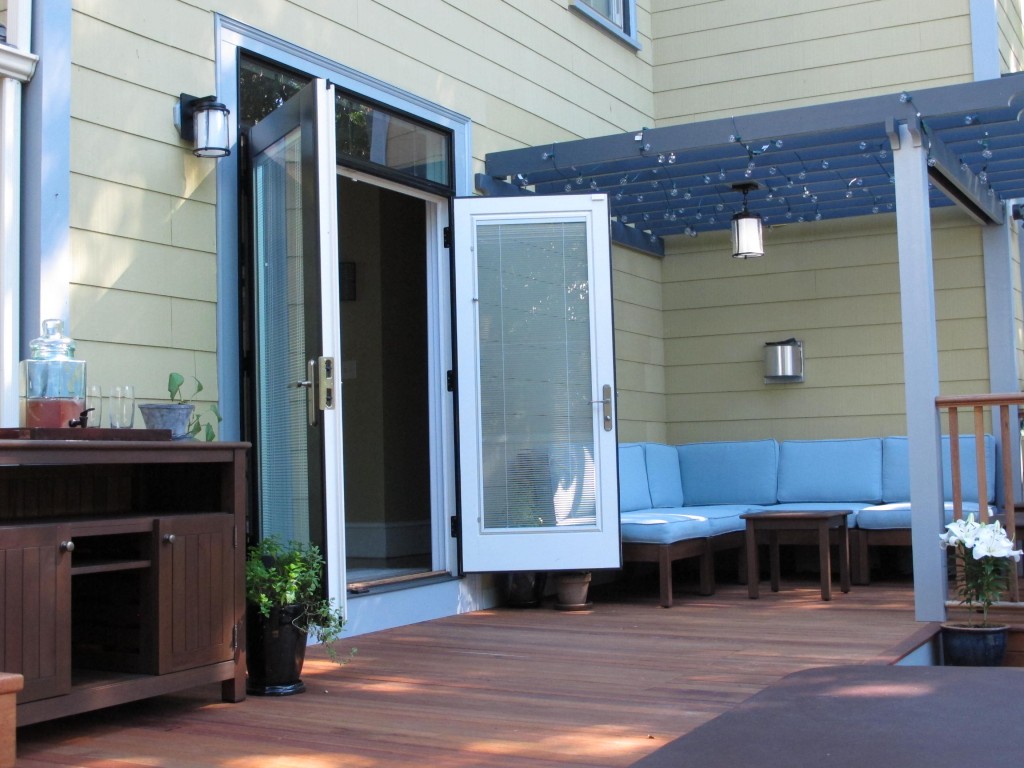
This line voltage wall sconce and pendant are both from Hubbardton Forge (a Vermont based manufacturer of gorgeous light fixtures). The string lights are also line voltage, they plug right into an outdoor GFCI outlet.
Most landscape lighting is 12 volt, or low voltage, which is much safer and more flexible to install. Low voltage wires can be buried 6″ underground (with or without conduit), and the fixtures can easily be pulled up and moved around to achieve the desired lighting effect. And, there is no risk if you accidentally find a wire with your hand or garden trowel. Low voltage fixtures comprise everything from path lights to wall lights, up lights, down lights and more.
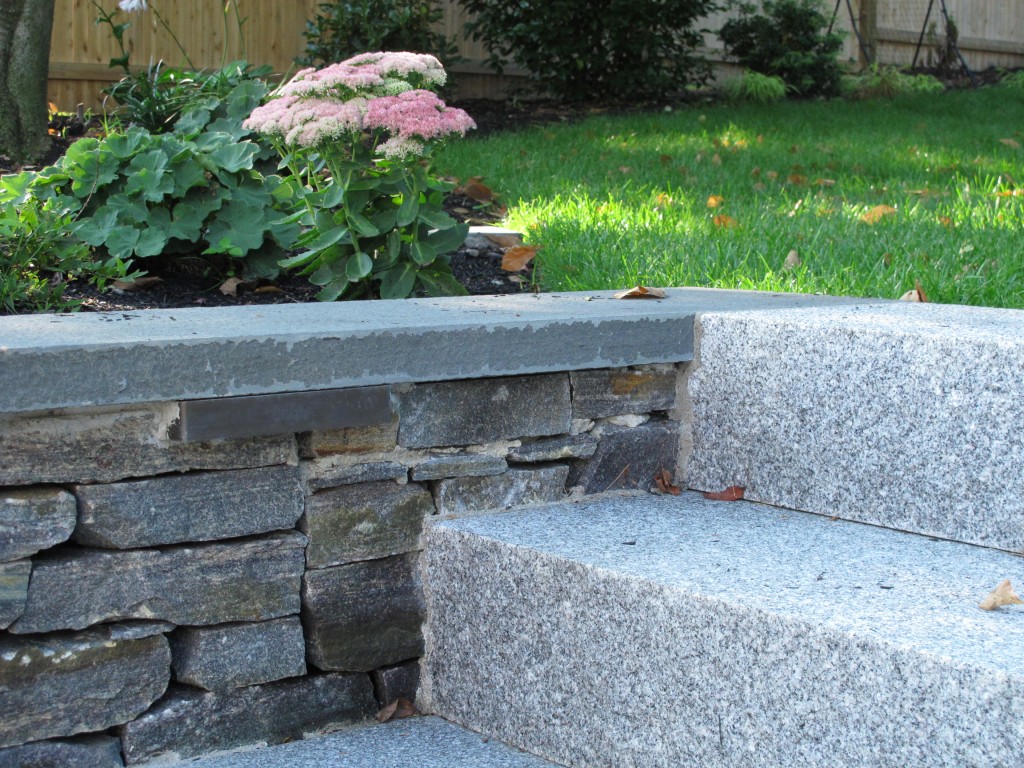
A low voltage wall light is mounted under the bluestone cap of this wall (look closely, it blends well with the stone). At night this washes down and illuminates the wall and steps.
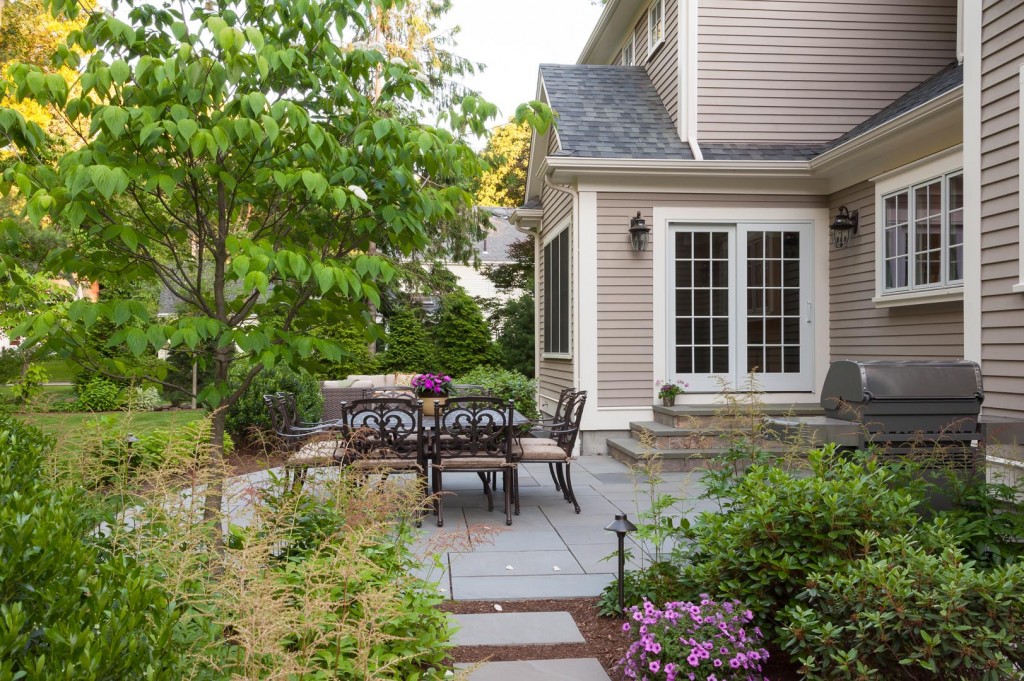
House mounted line voltage sconces provide light on either side of the sliding door. A low voltage path light marks the corner of this path and patio.
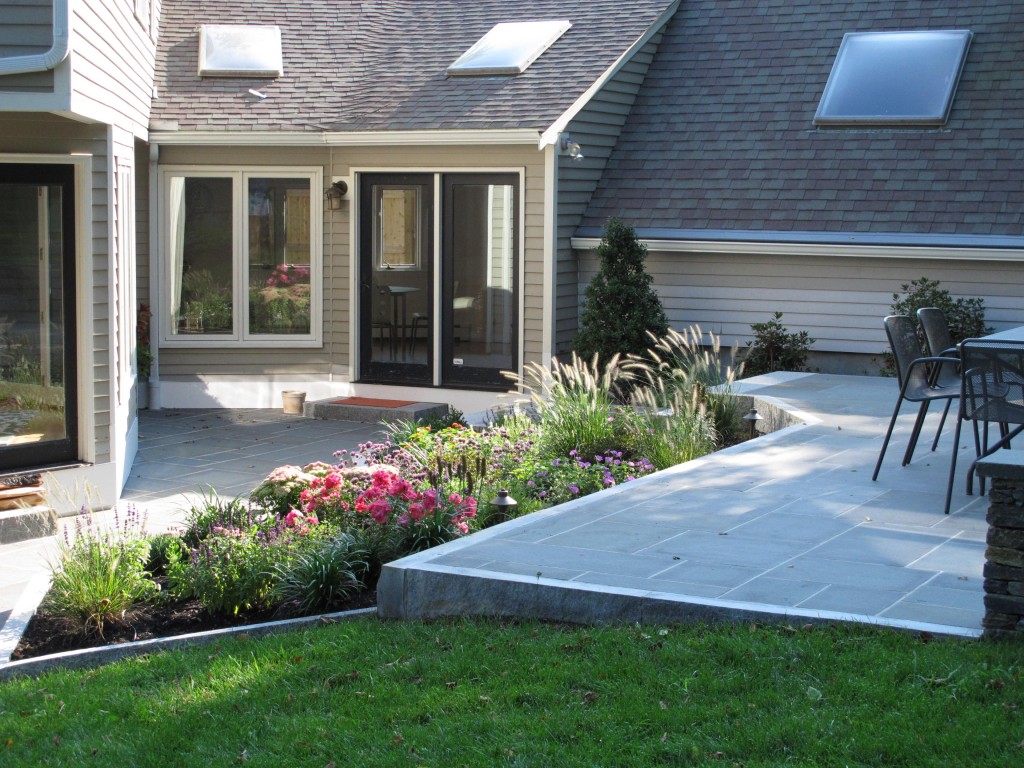
Two low voltage path lights sit in this garden bed and gently illuminate the edge of the patio and plant foliage.
To step 120v down to 12v for landscape lighting use, you’ll need a transformer. This device is plugged into an outdoor GFCI outlet. Wires run from the transformer to the landscape lighting fixtures. You will want to consider where your transformer is located (they aren’t the prettiest of devices). On my projects I will typically have an electrician install a GFCI outlet somewhere discreet (like the side of the house). This outlet can be controlled by a switch (inside or outside of the house) or can be controlled by a timer. Once the outlet is installed, a landscape contractor can mount the transformer to the house, install the wiring and place the low voltage fixtures in the landscape.
I hope this quick overview helps demystify the topic of line vs low voltage lighting a bit. In the next post, I will cover the basic of LED technology!

